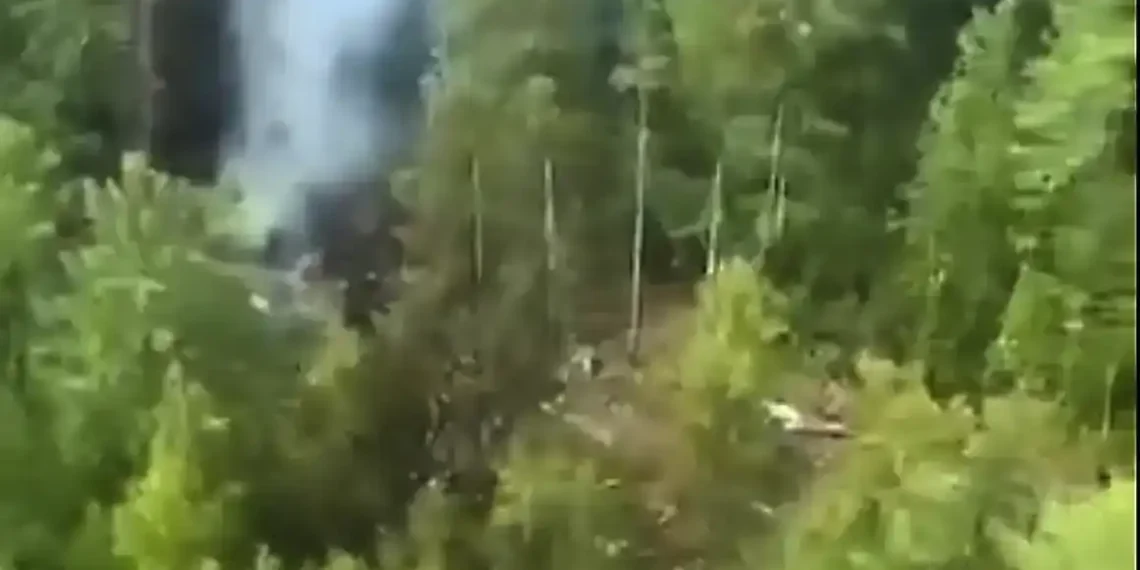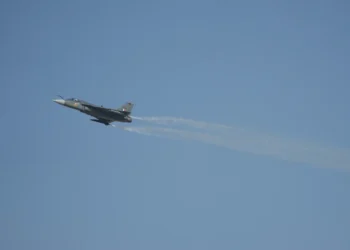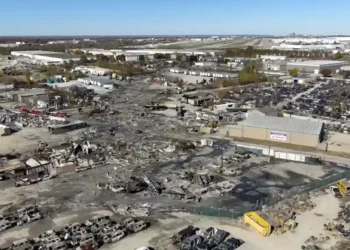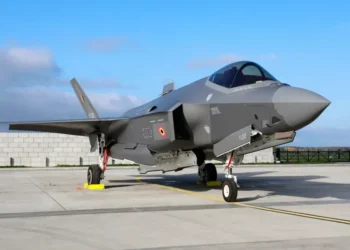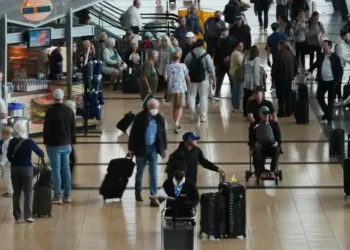Plane crash in Russia’s Far East kills 49, raising aviation safety concerns
July 24, 2025 – 8:32 PM
A tragic plane crash in Russia’s remote Amur region claimed the lives of all 49 people on board Thursday. The aircraft, a decades-old Antonov An-24, went down near the town of Tynda while en route from Blagoveshchensk. Rescue operations were delayed due to the area’s harsh terrain and weather conditions.
The crash is already raising renewed concerns over the safety of Russia’s aging domestic fleet — especially as ongoing international sanctions continue to restrict access to modern aircraft parts and maintenance support.
What happened
The twin-engine An-24 turboprop aircraft crashed roughly 15 kilometers south of Tynda, a small town in Russia’s Far East. It had departed from Blagoveshchensk, made a stop in Khabarovsk, and was nearing its final destination when it lost contact with air traffic controllers.
Emergency officials reported that the aircraft’s wreckage was discovered in a forested, mountainous area. Photos shared by Russian state media showed heavy smoke and debris scattered across the crash site.
According to regional Governor Vasily Orlov, the rescue effort has been hampered by the site’s remote location and difficult access.
Who was on board
Authorities confirmed there were 49 people aboard the flight, including:
- 43 adult passengers
- 5 children
- 6 crew members
The flight was operated by Angara Airlines, a Siberian regional airline. Initial figures reported by the Emergency Situations Ministry cited 48 people onboard, but that number was later updated.
Sadly, no survivors have been found.
Weather and final moments
Officials say the aircraft disappeared from radar during its descent and reportedly attempted a second landing approach — indicating possible complications during landing.
Unnamed sources cited by Russian media said poor weather likely played a role. Russia’s transport prosecutor’s office has opened an investigation into potential safety violations that may have led to the crash.
Such probes are routine in aviation disasters, particularly when loss of life is involved.
A dangerously old aircraft
The Antonov An-24 involved in the crash was nearly 50 years old, according to Russian aviation sources. Originally developed in the Soviet Union, this model has largely been retired in most parts of the world due to its age and safety risks.
Russia, however, continues to use older aircraft due to a combination of limited funding and growing restrictions on imported aviation parts since the war in Ukraine began in 2022.
Many regional carriers, like Angara Airlines, rely on aging fleets that are harder to maintain under current sanctions.
Russia’s aviation system under strain
Russia’s aviation sector has faced growing challenges since 2022, when Western nations imposed strict sanctions that blocked access to key aircraft components, maintenance tools, and leasing services.
As a result, many Russian airlines are flying older planes longer, often under difficult weather conditions in remote areas with minimal infrastructure.
The country’s aviation watchdog has recorded a rise in mechanical issues, emergency landings, and maintenance delays — all of which highlight mounting safety concerns.
While major airports in cities like Moscow or St. Petersburg still maintain modern systems, regional routes remain vulnerable to outdated technology and limited emergency response options.
Ongoing rescue and investigation
As of Thursday night, rescue teams were still working to access the crash site due to the dense forest and hilly terrain. Governor Orlov said all available resources were being deployed to reach the area and recover the aircraft’s black boxes.
“Rescuers are doing everything possible, but reaching the location has proven extremely difficult,” Orlov stated in a video message.
Flight data and cockpit voice recordings will be crucial to understanding exactly what led to the tragedy. Officials have promised a full investigation and public updates.
Why this matters
This disaster highlights deeper systemic issues in Russia’s aviation infrastructure. Without access to modern aircraft components and international maintenance support, the country faces growing risks in regional air travel — especially in remote territories where travel is essential but conditions are harsh.
As the investigation unfolds, the focus will likely turn to how long Russia can continue operating aging aircraft safely — and what reforms or international cooperation may be needed to prevent future tragedies.
Want more coverage on aviation safety and global developments?
Explore our latest stories, leave your thoughts in the comments, and share this article with others who follow international aviation news.
This article was rewritten by JournosNews.com based on verified reporting from trusted sources. The content has been independently reviewed, fact-checked, and edited for accuracy, neutrality, tone, and global readability in accordance with Google News and AdSense standards.
All opinions, quotes, or statements from contributors, experts, or sourced organizations do not necessarily reflect the views of JournosNews.com. JournosNews.com maintains full editorial independence from any external funders, sponsors, or organizations.
Stay informed with JournosNews.com — your trusted source for verified global reporting and in-depth analysis. Follow us on Google News, BlueSky, and X for real-time updates.
